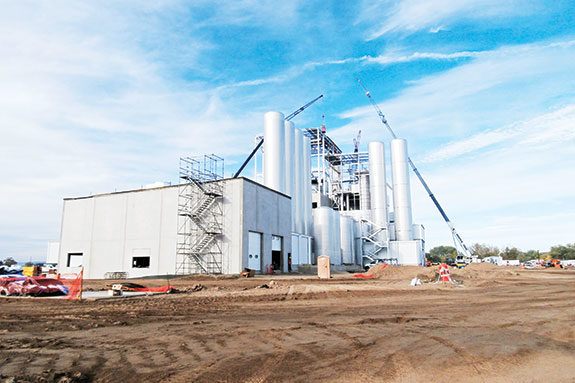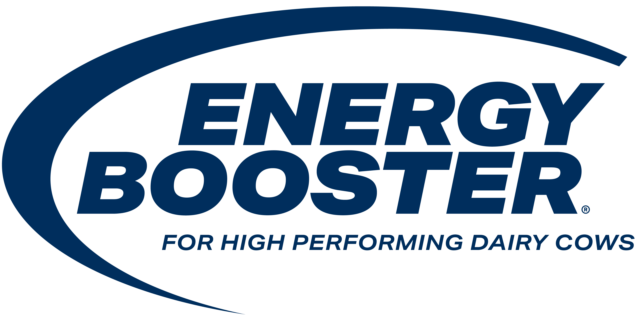Until now the U.S. has been mostly absent in the world’s largest dairy export market – whole milk powder. But that is soon to change. By next year, the U.S. will have the capacity to produce more than three times as much whole milk powder as it exported just a year ago. That prospect has at least one industry analyst calling it a “game changer” for the U.S. dairy industry.
“By adding whole milk powder to our product mix, I think it reinforces that U.S. suppliers are becoming more responsive to the needs of the global market,” says Alan Levitt, vice president of communications for the U.S. Dairy Export Council (USDEC).
“It demonstrates that we’re becoming more customer-centric and that we’re more serious about committing to exports.”
/MORE : See additional images of construction at the plant. Story continues below photo slideshow.
According to the USDEC, the U.S. share of global whole milk powder trade is currently less than 1 percent. Yet USDEC predicts that share should be 5 to 7 percent in the next year or two, and possibly even more over time.
That will be possible because of new production capacity at three different co-ops’ plants across the country. Darigold and Michigan Milk Producers Association have already retooled existing plants to bring whole milk powder production online.
DFA will begin commercial production at its new whole milk powder plant in Fallon, Nevada, early in 2014. All tallied together, USDEC estimates these plants provide initial new capacity to produce more than 12 million pounds (5,400 metric tons) of WMP per month.
Over the course of a year, that level of production will require more than 1 billion pounds of milk, or in other words, the average annual production of about 46,000 U.S. dairy cows.
“When we do calculations that show 15 percent of our milk is currently going overseas, and when you figure all this new whole milk powder is going to go to exports, that’s how you get to 17 percent, or eventually 20 percent, of our milk being exported overseas,” Levitt says.

New production in Nevada
DFA’s new plant manager, Wes Clark, who has been overseeing the construction of the co-op’s new facility, says it is being built “world-class” and “unlike any other in the U.S.”
“I’ve yet to see any plant in the U.S. that has this plant’s standards built into it,” says Clark, who has 28 years of experience drying and dehydrating milk products.
The most comparable plant, he believes, is likely in New Zealand, the world’s largest exporter of whole milk powder.
The plant will make five specifications of products in three product categories, including whole milk powder, non-fat dry milk (NFDM) and skim milk powder (SMP).
“Our focus is primarily overseas exporting of the products,” Clark says.
At full capacity, the plant will be able to process two million pounds of milk per day to make 280,000 pounds of finished product. At start-up, the plant is targeting to be at 60 to 70 percent capacity.
“The traceability of the milk supply to this plant is unique to any other place in the U.S. that I’m aware of,” Clark says.
“How the building is being structured, how the equipment is being placed, how the product is packaged and then handled all the way to China is certainly different than any other process that I have been involved with myself.”

Renovated production in Washington
During the renovation of a dryer plant in Lynden, Washington, that was damaged by fire in 2012, Darigold upgraded its plant’s equipment to be able to produce whole milk powder.
The facility opened this spring and began producing non-fat dry milk and skim milk powder as it had before.
Whole milk powder production began for the first time in August.
The plant’s full capacity for whole milk powder production would be 30 million pounds per year and should be reached early next year.
“We are currently shipping whole milk powder overseas,” says Dermot Carey, senior vice president of ingredients division for Darigold. “Full throughput is probably Q1 of next year.
We are holding back until we get initial shipments into the export market, can visit the market and talk to customers to make sure everything is OK and then we will scale up.”
Carey says that 40 percent of the milk supply Darigold receives from its farmers is currently exported overseas in one form or another.
He believes becoming more relevant to the export market by producing whole milk powder is important – both for his co-op’s farmers and all U.S. dairymen.
“If all of the products currently exported had to stay home, we’d have a pretty sad milk price, and our dairymen couldn’t survive on it.” Carey says.
“We’re finally moving into a space that the U.S. should be in and one that will become more important for its future. How we manage and treat it now will dictate the future for the U.S. dairy industry.”
‘It opens doors’
The West Coast is a prime location for increased whole milk powder production. Carey indicates that shipping rates to China via boat are comparable to overland trucking rates to population centers on the East Coast. Carey says he can envision the day that up to 50 percent of his co-op’s milk supply is exported.
“Our plant gives us huge flexibility that we didn’t have before,” Carey says. “It allows us to go after some of that enormous whole milk powder market that has developed in China.”
Carey says adding whole milk powder to his arsenal of exportable ingredients makes him more “relevant” to the co-op’s customers.
Levitt and USDEC president Tom Suber both agree these developments make U.S. suppliers more relevant.
Suber recently wrote the following opinion on the importance of whole milk powder production to the nation’s global competitiveness: “We can talk all we want about becoming more ‘customer oriented’ – making what the customer wants instead of trying to sell what we to make.
But if you want to be a world-class exporter, you simply have to have whole milk powder in your portfolio.”
So how does the expansion of U.S. whole milk powder impact all other U.S. dairy exports?
“I think it stands to reason that this opens doors for us,” Levitt says. PD
PHOTOS
TOP: Construction continues on DFA’s whole milk powder plant in Fallon, Nevada. The plant should be operational after the first of the year. Photo courtesy of DFA.
BOTTOM: Darigold recently renovated one of its existing plants in Lynden, Washington, to be able to produce whole milk powder. The plant has been producing the product for overseas customers since August. Photo courtesy of Darigold.

Walt Cooley
Editor
Progressive Dairyman





